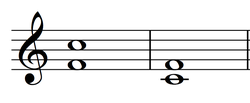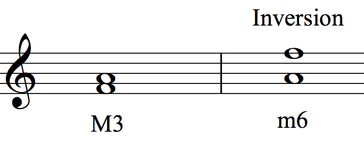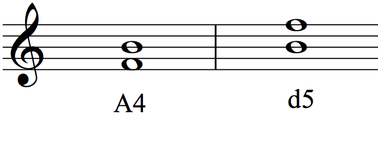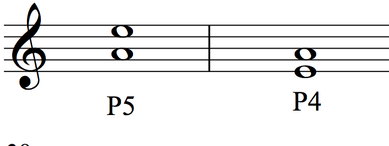Interval Inversions
When we refer to inversions in music, we are talking about flipping them or inverting them. In other words, we will take notes that went up (melodically), and make them go down, or vice-versa.
An interval inversion occurs when we flip an interval. We will switch the relationship between the two notes, making the bottom note the top note, and the top note the bottom note. For example:
An interval inversion occurs when we flip an interval. We will switch the relationship between the two notes, making the bottom note the top note, and the top note the bottom note. For example:
Labeling Interval Inversions
Once we know the quality and distance of the original interval, it is very easy to determine the quality and distance of it's inversion. Yes we can go through the entire process again once have flipped the interval, but there is an easier way.
Distance: 9 - x = inversion
To determine the distance of the inversion, take the original distance and subtract it from 9. This will determine the distance of the inverted interval. For example:
The inverted distance of a 3rd, would be a 6th (9 - 3 = 6). The inversion of a perfect 4th, would be a perfect 5th (9 - 4 = 5).
Quality: Reversing pairs
To determine the quality you must remember the following pairs. Once inverted, they will switch.
Distance: 9 - x = inversion
To determine the distance of the inversion, take the original distance and subtract it from 9. This will determine the distance of the inverted interval. For example:
The inverted distance of a 3rd, would be a 6th (9 - 3 = 6). The inversion of a perfect 4th, would be a perfect 5th (9 - 4 = 5).
Quality: Reversing pairs
To determine the quality you must remember the following pairs. Once inverted, they will switch.
- Major <-> Minor
- Diminished <-> Augmented
- Perfect <-> Perfect
To practice, download the following worksheet.




